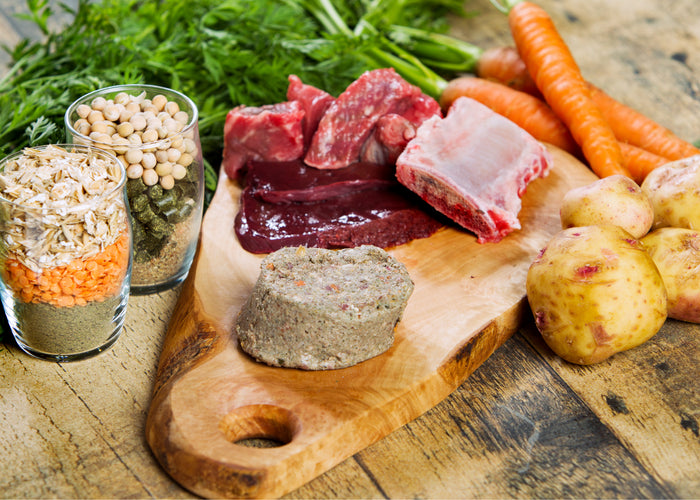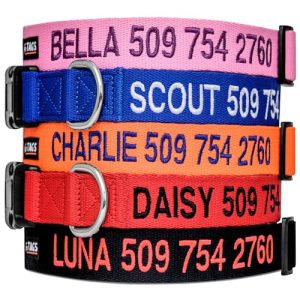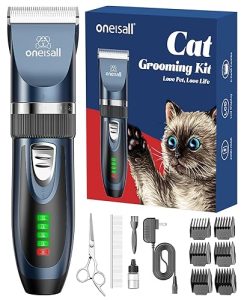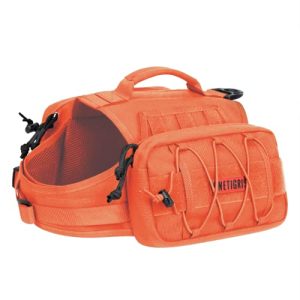Are you wondering just how much raw food your 40 lb dog needs? You’re not alone.
Many pet owners like you are looking to provide the best nutrition for their furry friends, but figuring out the right portion sizes can feel overwhelming. You want to ensure your dog is healthy and happy without overfeeding or underfeeding.
Imagine the peace of mind that comes with knowing you’re giving your dog exactly what they need. Stick around, and you’ll discover the simple formula to calculate the perfect raw food amount for your dog, ensuring they thrive every day.
Daily Raw Food Amount
Feeding your 40-pound dog the right amount of raw food keeps them healthy. The daily food amount depends on your dog’s weight and activity.
It is important to measure food accurately to avoid overfeeding or underfeeding your pet.
Calculating Food Based On Weight
Dogs usually eat about 2% to 3% of their body weight in raw food daily. For a 40-pound dog, this means feeding between 0.8 and 1.2 pounds of food each day.
- 2% of 40 lbs = 0.8 lbs of raw food
- 3% of 40 lbs = 1.2 lbs of raw food
Start with 2% and increase if your dog needs more energy. Adjust the amount as needed.
Adjusting Portions For Activity Level
Active dogs need more calories than less active dogs. Adjust raw food portions based on how much your dog moves daily.
- Low activity: Feed closer to 2% of body weight
- Moderate activity: Feed about 2.5% of body weight
- High activity: Feed up to 3% of body weight
Watch your dog’s weight and energy. Change food portions to keep them fit and happy.
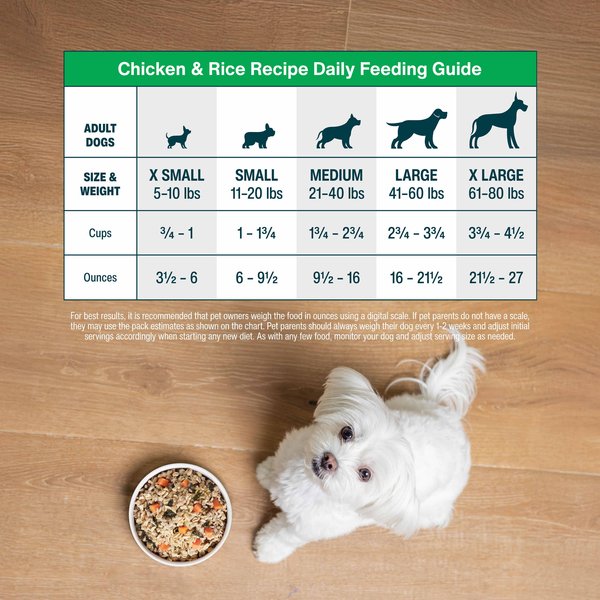
Credit: www.chewy.com
Types Of Raw Food
Feeding a 40 lb dog raw food requires knowing the right types to include. Raw food for dogs mainly consists of meat, organs, bones, and supplements. These provide essential nutrients for good health.
Choosing the right balance of these foods helps your dog get protein, vitamins, and minerals naturally. Below are details on the main types of raw food to use.
Meat Cuts And Organ Meat
Meat cuts provide muscle protein, while organ meats supply important vitamins and minerals. Both are vital for a balanced raw diet.
- Meat Cuts:Include beef, chicken, turkey, and lamb. These provide lean protein and fat.
- Organ Meat:Liver, kidney, and heart are rich in iron and vitamins A and B.
- Mix different meats to give your dog a variety of nutrients.
- Avoid processed or cooked meats as they lose some nutrition.
Bones And Supplements
Raw bones help keep your dog’s teeth clean and provide calcium. Supplements add nutrients that might be missing from raw food alone.
| Item | Purpose | Examples |
|---|---|---|
| Raw Bones | Dental health, calcium source | Chicken necks, beef marrow bones |
| Supplements | Boost vitamins and minerals | Fish oil, kelp powder, eggshell powder |
Balancing Nutrients
Feeding a 40 lb dog raw food needs careful nutrient balance. Dogs need protein, fat, vitamins, and minerals.
Proper balance keeps your dog healthy and active. It helps with energy, growth, and strong bones.
Protein To Fat Ratio
Protein and fat are main energy sources for dogs. A good ratio supports muscle and body functions.
For a 40 lb dog, aim for 80% protein and 20% fat in raw meals. This ratio helps keep weight steady.
- Protein builds and repairs muscles
- Fat provides energy and healthy skin
- Too much fat can cause weight gain
Vitamins And Minerals
Vitamins and minerals support many body functions. They help the immune system and keep bones strong.
Include organ meats, vegetables, and supplements. These add needed vitamins like A, D, E, and minerals like calcium.
| Vitamin/Mineral | Source | Benefit |
|---|---|---|
| Vitamin A | Liver | Good eyesight and immune health |
| Calcium | Bone meal, crushed eggshells | Strong bones and teeth |
| Vitamin D | Fish oil | Supports bone growth |
| Iron | Red meat | Helps blood carry oxygen |

Credit: granddog.ca
Feeding Frequency
Feeding your 40 lb dog the right amount of raw food is important for health. The frequency of feeding affects digestion and energy levels.
Different schedules work better for different dogs. You can feed daily or every other day based on your dog’s needs.
Daily Vs. Alternate Day Feeding
Daily feeding gives your dog steady energy and keeps hunger away. It is easy to manage and fits most routines.
Alternate day feeding means feeding every other day. Dogs eat larger meals less often and fast in between. Some dogs do well with this and it can aid digestion.
- Daily feeding: smaller meals twice a day
- Alternate day feeding: one larger meal every two days
- Choose based on your dog’s activity and health
Age-based Feeding Schedule
Puppies, adults, and senior dogs need different feeding schedules. Age affects how much and how often they should eat.
Young puppies need more frequent meals. Adult dogs do well with two meals a day. Older dogs may prefer smaller, more frequent meals.
| Age | Feeding Frequency | Meal Size |
|---|---|---|
| Puppies (up to 6 months) | 3-4 times daily | Small meals |
| Adults (1-7 years) | 2 times daily | Moderate meals |
| Seniors (7+ years) | 2-3 times daily | Smaller meals |
Monitoring Dog’s Health
Feeding your 40 lb dog raw food requires careful attention to their health. Watching your dog’s condition helps ensure they get the right amount of food.
Regular checks allow you to adjust portions and keep your dog strong and active.
Weight Tracking Tips
Track your dog’s weight often to spot changes quickly. Use a reliable scale and record the weight weekly. Consistent tracking helps you notice if your dog is gaining or losing weight too fast.
- Weigh your dog at the same time each week
- Keep a log of each weight measurement
- Compare weight trends over several weeks
- Adjust food portions based on the weight data
- Consult your vet if weight changes are sudden
Signs Of Overfeeding Or Underfeeding
Look for clear signs that your dog’s diet needs changes. Overfeeding can cause weight gain and low energy. Underfeeding leads to weight loss and poor coat condition.
| Sign | Possible Cause | What to Do |
| Excessive weight gain | Overfeeding | Reduce food amount, increase exercise |
| Weight loss or low energy | Underfeeding | Increase food portions, check for illness |
| Dull coat or dry skin | Underfeeding or poor nutrition | Consult vet, improve diet quality |
| Constant begging or hunger | Underfeeding | Increase meal size or frequency |
| Loose stools or vomiting | Overfeeding or food intolerance | Adjust food type or amount, vet check |
Common Feeding Mistakes
Feeding a 40 lb dog raw food requires care and attention. Many dog owners make mistakes that affect their pet’s health.
Knowing the common errors helps you avoid problems and keep your dog healthy and happy.
Overfeeding Risks
Giving too much food can cause weight gain and health issues. Dogs that are overweight may have joint pain and less energy.
- Overfeeding can lead to obesity and related diseases.
- Too many calories strain the heart and organs.
- Excess food may cause digestive upset and diarrhea.
- It is easy to misjudge portion sizes with raw diets.
Ignoring Nutritional Variety
Raw food diets must include different foods to provide all nutrients. Feeding only meat or bones causes deficiencies.
| Food Type | Importance | Common Issues if Missing |
| Muscle Meat | Main protein source | Muscle loss, weakness |
| Organ Meat | Vitamins and minerals | Vitamin deficiencies |
| Bone | Calcium and phosphorus | Weak bones, dental problems |
| Vegetables | Fiber and antioxidants | Digestive problems |
Expert Tips For Raw Feeding
Feeding your 40 lb dog a raw diet requires careful planning. It helps to know how much raw food your dog needs daily.
Understanding how to transition and handle the food safely keeps your dog healthy. These tips guide you through the process.
Gradual Transition To Raw Diet
Start by mixing small amounts of raw food with your dog’s current diet. Increase the raw portion over two weeks to avoid stomach upset.
- Begin with 10% raw food and 90% current food.
- Increase raw food by 10% every three days.
- Watch for signs of digestive discomfort.
- Adjust the pace if your dog shows any issues.
- Reach 100% raw food by the end of two weeks.
Safe Handling And Storage
Raw food can carry bacteria if not handled properly. Keep your dog and family safe by following these rules.
| Tip | Details |
| Keep raw food frozen | Store at -18°C (0°F) or below |
| Thaw in refrigerator | Never thaw on the counter |
| Clean surfaces | Use hot, soapy water after contact |
| Separate utensils | Use different knives and bowls |
| Serve immediately | Do not leave raw food out for long |

Credit: www.k9sovercoffee.com
Frequently Asked Questions
How Much Raw Food Does A 40 Lb Dog Need Daily?
A 40 lb dog typically needs about 2-3% of its body weight in raw food daily. This equals roughly 0. 8 to 1. 2 pounds of raw food per day, split into one or two meals for balanced nutrition.
What Types Of Raw Food Are Best For A 40 Lb Dog?
Balanced raw meals for a 40 lb dog include muscle meat, organ meat, and raw bones. Adding vegetables and supplements ensures all nutrients, vitamins, and minerals for optimal health.
Can I Feed My 40 Lb Dog Raw Food Every Day?
Yes, feeding raw food daily is safe if well-balanced. Ensure variety and monitor your dog’s health regularly to prevent nutritional deficiencies or digestive issues.
How To Transition A 40 Lb Dog To A Raw Food Diet?
Start by mixing small amounts of raw food with current meals. Gradually increase raw portions over 7-10 days to help your dog adjust smoothly without digestive upset.
Conclusion
Feeding a 40 lb dog the right amount of raw food keeps them healthy and happy. Start with about 2-3% of their weight daily. Watch your dog’s energy and weight to adjust portions as needed. Fresh, balanced meals support strong muscles and shiny coats.
Always provide clean water alongside their food. Consult your vet to meet your dog’s unique needs. Feeding raw takes care and patience. Your dog will thank you with good health and joy.

Emily Barker is the founder of ChillDogLife.com, a space dedicated to helping pup parents discover the best dog products, lifestyle tips, and cozy ideas for happier homes.
A lifelong dog lover, Emily combines her passion for pets with a knack for research to share trusted recommendations on everything from toys and furniture to health and everyday care.
Her goal is simple: to make life easier, stylish, and more joyful for dogs and the people who love them.
